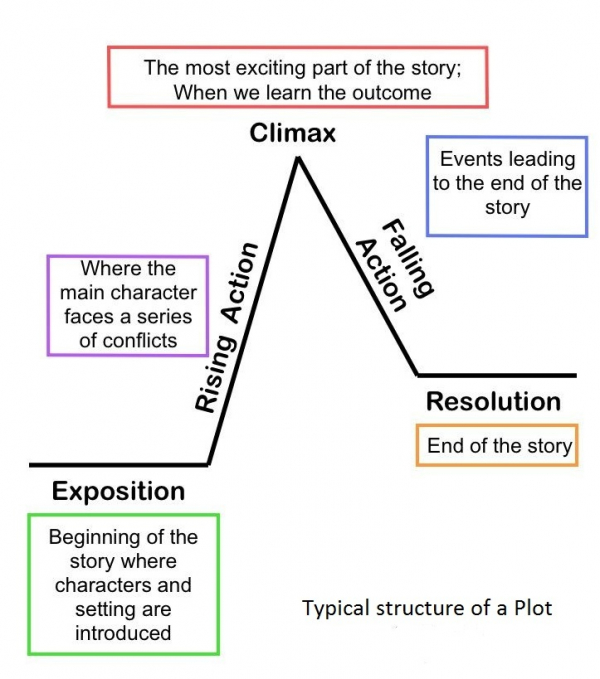By Sajeeb Sarker
Plot Structure
Media School July 20, 2020

A plot is a series of events that are connected with each other following a logical protocol.
A plot, often referred to as the 'storyline', is a series of events that tells a story. So, a plot is not a linear presentation of scattered events, rather, it is a sum-total of different events that are connected with each other following a logical protocol. So, it is a non-linear depiction of a story.
Typically, a plot is divided (to be more precise, explained) into the following 5 segments:
1. Exposition or Introduction: This is usually the starting phase of the plot where the story along with the setting and (main) characters are introduced. This stage also includes and/or indicates to the main problem or conflict that is coming, or gives an early idea of goal of the story.
2. Rising Action: This stage mainly comprises of the series of events that actually leads the protagonist to the bigger (main) crisis. This stage often starts with an inciting incident that initiates the series of conflicts that is responsible for the ultimate climax. From this point, the storyline gradually becomes more complex while creating a sense of tension.
3. Climax: It is the most exciting part of the story being the turning point in the plot. It is the pinnacle or the apex of the crisis heightening the tension at its peak. At this stage, the protagonist faces the deepest and toughest challenge and tries to overcome the situation. In most cases, this is the most emotional stage of the storyline and includes the most dramatic acts.
4. Falling Action: This stage actually includes a few events that leads to the 'end' of the climax as well as the story. During this phase, the tension created earlier starts to go down. Actions taken at this stage or the events taking place at this stage finally paves the way to a settlement necessary to finally end the story - leading to a solution.
5. Denouement or Conclusion: This is the last stage of the plot where all problems are solved. At this stage, all scores are settled; all problems are solved while all conflicts end, and the goal is achieved by the protagonist. So, this is the end of the story. But it is important to note that this settlement or resolution can be positive, negative or neutral - depending on the logic of the story.


